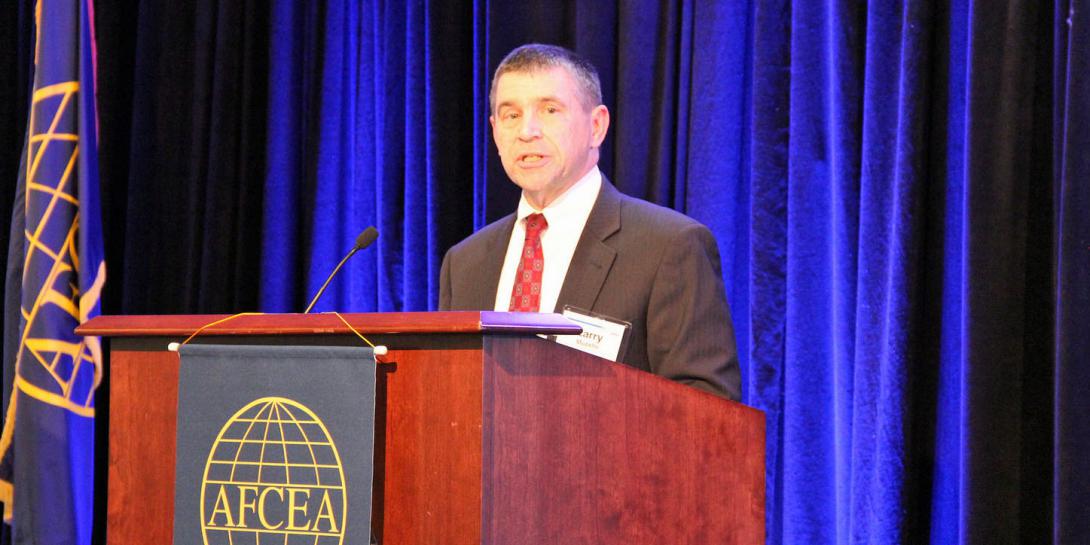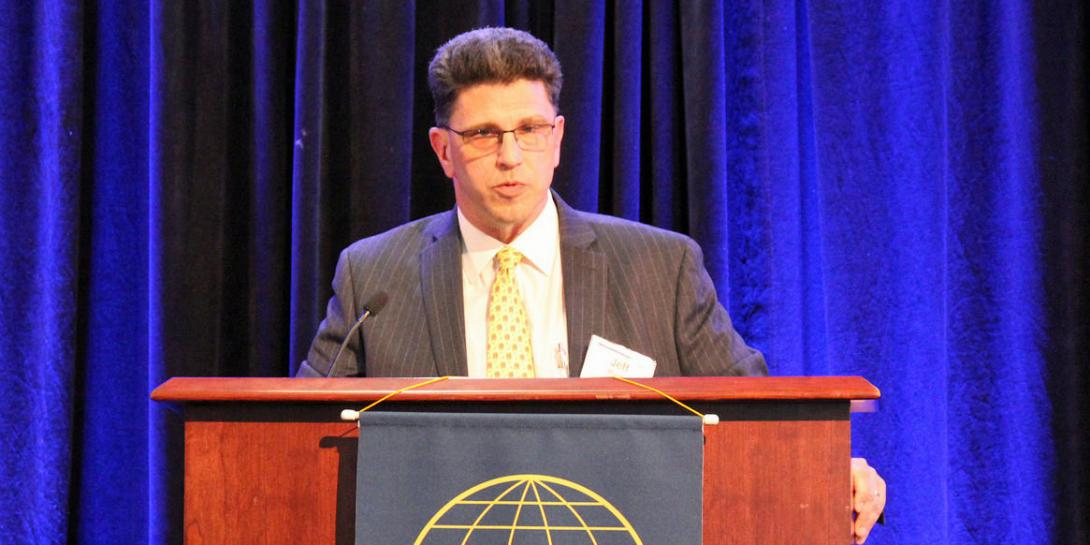Aberdeen Proving Ground Looks to STEM Capabilities
Science, technology, engineering and math education and skills are necessary for the Army and the country to remain competitive, experts say. Aberdeen Proving Ground (APG), known as the "home of innovation" for the Army, needs these so-called STEM graduates in its ranks to successfully go forward, an expert says.
At APG, the Communications-Electronics Command, known as CECOM, is building and sustaining some of the most advanced radio and satellite communications systems in the world, according to CECOM Deputy to the Commanding General Larry Muzzelo. APG, with $1 billion in research and development (R&D), houses several Centers of Excellence (COE) including those for Command, Control, Communications, Computers, Intelligence, Surveillance and Reconnaissance (C4ISR), R&D, and Chemical and Biological.
Given these innovation and technology development responsibilities, APG needs a talented STEM workforce, among other things. “We know that scientifically and technologically literate workers are truly critical for our national defense,” said Muzzelo. “Within the Army, and at APG, it’s never been more vital to grow these skills and invest in STEM programs within our communities that will provide the pool of talent from which we’ll draw the majority of our next generation of APG engineers, scientists, software developers and cybersecurity professionals.” Muzzelo recently shared his perspective at AFCEA Aberdeen’s annual Awards Dinner in Belcamp, Maryland, and in an interview with SIGNAL Magazine.
APG is developing cutting-edge technologies such as a quadcopter—a helicopter built to rapidly resupply soldiers in combat; microdrones that give soldiers enhanced situation awareness; mobile laser scanners and 3D printers that allow soldiers to print needed parts right on the battlefield; and sensors for the next generation of combat vehicles to detect hostile fire. In addition, APG’s R&D COE is working to solve problems faced by deployed soldiers related to equipment and harnessing soldier insights from equipment use. “Our ultimate customer is the American soldier, who is willing to sacrifice so much to defend our freedom, our Constitution and our way of life,” Muzzelo stressed.
At the same time, however, part of APG is facing an aging workforce. At CECOM, the average employee age is 48 years. “So finding the talent and enthusiasm to continue that excellence presents us with a very real challenge,” Muzzelo shared.
Part of that job is being able to attract a younger generation to the Army and to APG, Muzzelo explained. For this, APG needs “a multipronged approach,” something more than traditional job postings on the USA Jobs website, he said. “[We need] to market ourselves and our opportunities through social media, via college and community job fairs, and to educational partners,” Muzzelo noted.
CECOM has only been a part of APG for seven years, following its relocation from Fort Monmouth, New Jersey. That move to Aberdeen, along with a number of other base realignment and closure relocations (BRAC) impacting APG, essentially transformed it from a training base to a technology base, Muzzelo stressed. And while physically locating commands together within the C4ISR COE has enhanced CECOM’s ability to collaborate on capabilities throughout the technology life cycle, CECOM has had to build up its related community in the Aberdeen area.
“Of course, there have been challenges,” Muzzelo said. “There were long-standing relationships between CECOM at Fort Monmouth with the surrounding communities and secondary education institutions. We are still building up those relationships—very successfully so far—with our new partners and neighbors here in Northeastern Maryland.”
In addition, CECOM has gaps to fill from retirement or attrition from its original New Jersey-based employees—many of which still commuted to APG from Fort Monmouth. “Slowly many individuals have retired or moved on, and that has presented some challenges in hiring and replacing their institutional knowledge,” Muzzelo said.
A slow hiring process, which can extend into months, presents another challenge, Muzzelo admitted. “Our typical processes are way too slow,” he said. “If we want the best and brightest candidates, we need to have the ability to offer jobs on the spot, just like industry. This is the biggest challenge we are working to overcome.”
Through its Pathways program, APG does offer paid internships for high school to graduate-level students. The base also has a fellowship program and other scholarship, loan and grant programs. “Since 2016, we’ve hired more than 200 young scientists, engineers and mathematicians into trainee positions at APG,” Muzzelo shared. In addition to the Army Educational Outreach Program (AEOP), which supports the advancement of STEM education, APG has what Muzzelo calls a “vibrant STEM partnership,” with educational opportunities for students and teachers, ranging from hosted Lego leagues, solar car building competitions and career shadowing days, among other activities.
Down the road from APG, Harford Community College (HCC) is working to prepare STEM students for possible careers at the base. Through a National Science Foundation Grant, HCC offers a S-STEM Scholarship Program for students in engineering or biology. In addition, the school opened a Cybersecurity Center for Academic Excellence in 2017 that offers a Cyber Defense Certificate program. The National Security Agency and the Department of Homeland Security have designated the program as a National Center of Academic Excellence. The program, which offers four certifications, could be for those just coming into the cyber realm, starting a career or changing careers, Dawn Grissom, project director, HCC, explained. “Fourteen of the sixteen community colleges in the state of Maryland received funding from the federal government to increase the pipeline of cybersecurity workers,” she said. "What we did, in terms of enhancing our program and capacity, was to create this new certificate program to address that critical need."
Meanwhile, AFCEA International’s Aberdeen, Chapter, like so many of the association’s chapters worldwide, works to provide annual STEM-related scholarships, grants and tuition assistance. This year, the Aberdeen chapter awarded more than $81,000 to APG-area elementary and high schools, reaching teachers and students with scientific equipment, toolkits, mentor grants and college scholarships, reported Jeff Murter, chapter vice president, education, and president, GSI Technologies.
The chapter, after a period of dormancy, began awarding scholarships and grants in 2010. Since then, it has worked to issue more than $350,000 in grants and scholarships to the local community, Murter said. The chapter recently established a Cyber Defense Scholarship for students in HCC’s Cyber Defense Certificate program, “to help students in need help fill a critical workforce requirement,” Murter noted. “We’ve also built a reputation of being the “go-to” organization to support urgent STEM needs in the APG community.” The chapter was able to provide a last-minute sponsorship for HCC’s Destination ImagiNation Program when it was accepted into a national competition and is paying supporting certification examination costs for cyber students in need.






Comments